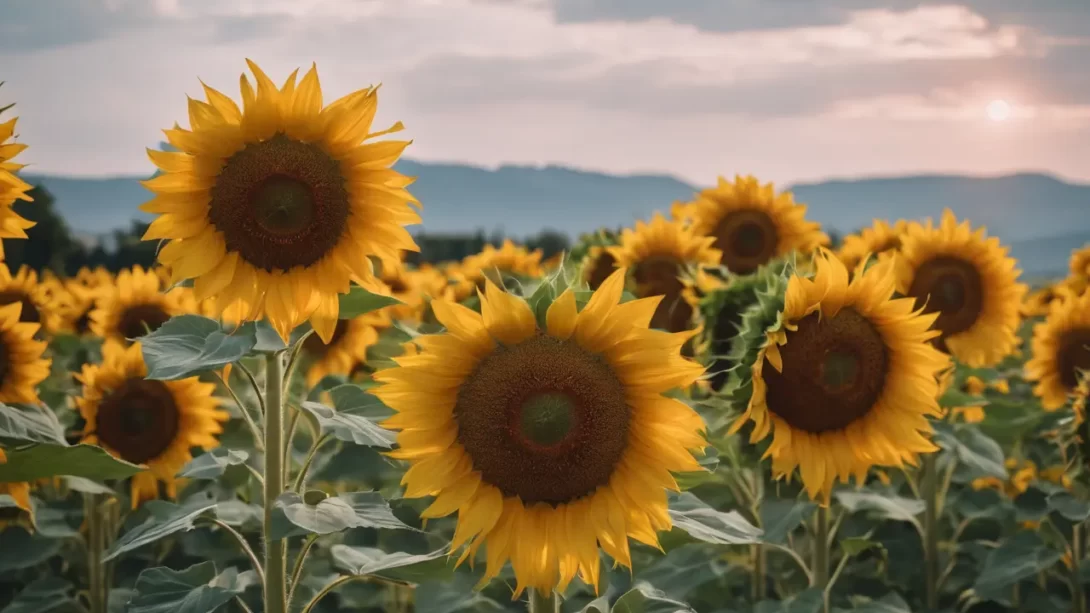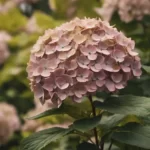North Carolina, with its diverse climate and landscapes, offers an ideal environment for growing sunflowers. These majestic and vibrant plants are not only a visual delight in gardens but also serve various purposes, from ornamental beauty to seed production. This article guides you through the essential steps and considerations for planting sunflowers in the Tar Heel State.
Sunflowers
Sunflowers come in a variety of types suitable for North Carolina’s climate. Ranging from the towering ‘Mammoth’ to the petite ‘Teddy Bear’, there’s a sunflower for every garden size and style. Typically, sunflowers are categorized into single-stem varieties, which produce one large flower, and branching varieties, which produce multiple smaller blooms. Single-stem varieties are often favored for their iconic, large heads, while branching types are prized for their extended blooming period and abundant flowers.
Ideal Planting Time
The optimal time for planting sunflowers in North Carolina is from late March to early May. This window allows the sunflowers to enjoy the cooler spring temperatures during their initial growth stages, leading up to the warmer summer months which facilitate blooming. In the mountainous regions of North Carolina, it’s advisable to wait until the latter part of this range to avoid late spring frosts. Coastal areas, with their milder climates, can often support earlier planting. It’s important to plant sunflowers after the last frost date in your specific area to ensure the young plants aren’t damaged by cold weather.
Soil and Location Requirements
Sunflowers thrive in well-drained soil rich in organic matter. They prefer a slightly acidic to neutral soil pH, ranging from 6.0 to 7.5. Before planting, it’s beneficial to work compost or a balanced fertilizer into the soil to enhance its nutrient content. This preparation ensures the sunflowers have the necessary nutrients for robust growth.
The location for planting sunflowers is equally important. These plants require full sun exposure, meaning at least 6 to 8 hours of direct sunlight daily. Choose a spot in your garden that receives ample sunlight throughout the day. This is crucial for sunflowers, as they not only need the sun for growth but also exhibit heliotropism when young, meaning they follow the sun across the sky.
Planting Process
When planting sunflowers, start by sowing seeds directly into the garden soil. Plant the seeds about 1 to 2 inches deep and about 6 inches apart. If you’re planting larger varieties, increase the spacing to about 12 inches to allow ample room for growth. After sowing, water the soil gently but thoroughly to settle the seeds.
For the first few weeks after planting, keep the soil moist but not waterlogged. This is a crucial period for seedling establishment. As the sunflowers grow, you can gradually reduce the frequency of watering, allowing the soil to dry out slightly between waterings. Sunflowers have deep roots that make them somewhat drought-resistant, but consistent moisture is key in the early stages of growth.
Watering and Fertilization
Sunflowers are not particularly high-maintenance when it comes to watering. Once established, they can tolerate some dry conditions. However, for the healthiest growth and best blooms, water them regularly, especially during prolonged dry spells. A deep watering once a week should be sufficient, depending on the weather conditions.
As for fertilization, if you’ve amended the soil at planting time, additional feeding may not be necessary. However, a mid-season application of a balanced, all-purpose fertilizer can help promote vigorous growth and larger flower heads. Avoid over-fertilizing, particularly with nitrogen-heavy fertilizers, as this can lead to lush foliage at the expense of flowers.
Pest and Disease Management
Sunflowers in North Carolina can be susceptible to certain pests and diseases. Common pests include aphids, beetles, and sunflower borers. Diseases such as powdery mildew, rust, and downy mildew can also affect sunflowers, especially in humid conditions. Regular monitoring of your plants is essential for early detection and control. Implementing organic control methods, such as introducing beneficial insects for aphid control or using neem oil, can be effective. For diseases, ensuring good air circulation around plants and avoiding overhead watering can help prevent fungal growth.
Supporting Sunflowers
Taller varieties of sunflowers, particularly those grown for their large seed heads, may require support as they grow. Staking these plants early in their development can help prevent stem breakage, especially in windy areas or during storms. Use garden stakes or bamboo rods, and gently tie the plants to the supports with soft ties, ensuring not to damage the stems.
Harvesting and Enjoying Sunflowers
Sunflowers are ready for harvesting when their petals begin to wilt and the back of the flower head turns brown. For ornamental use, cut sunflower stems early in the morning, choosing blooms that have just opened. For harvesting seeds, cover the heads with cheesecloth or paper bags once the petals fall to protect them from birds. Allow the heads to dry on or off the stem, then rub the heads to dislodge the seeds.
Conclusion
Planting sunflowers in North Carolina is a rewarding endeavor that brightens any garden. By understanding the right planting time, soil and location requirements, and caring for the plants through their growth cycle, you can enjoy the beauty and bounty of sunflowers. Whether for their striking presence in the garden or for their delicious seeds, sunflowers are a delightful addition to any North Carolina garden. Embrace these golden giants, and let them bring a touch of sunshine to your outdoor space.



